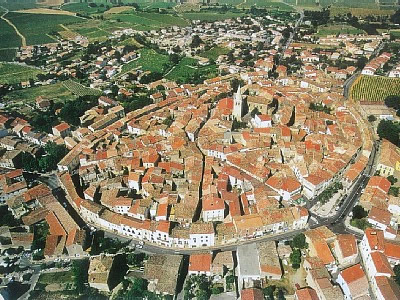|
< BACK TO 'ABOUT THE LANGUEDOC'
Villages: Murviel-Lès-Béziers History
The name originates from Muro vetulo (1039), composed of muri : the walls (les murs), and vetuli : old (vieux); Murviel derives from the plural muri vetuli : the old walls (les vieux murs).
The strategic strengths offered by the location attracted its first settlers. Later the Romans built a "castrum" (fortified place) here to control the outlet of the Orb out onto the Béziers plain and the ancient Béziers - Cahors road (the link between the sea and mountains).
The first lords encircled the local hill with a crown of ramparts, covering four hectares. Until the 19th century the ramparts provided shelter from war, banditry and even epidemics, confining the villagers to a life of enclosure. This led to the building of courtyards and overlapping houses, some even covering the streets-cum-porches.
The final result can be visited today by following a sign-posted walk. From the castle terrace the extensive panoramic view proves just how strategic it was and explains its past rapid development.
Sites of interest
|
